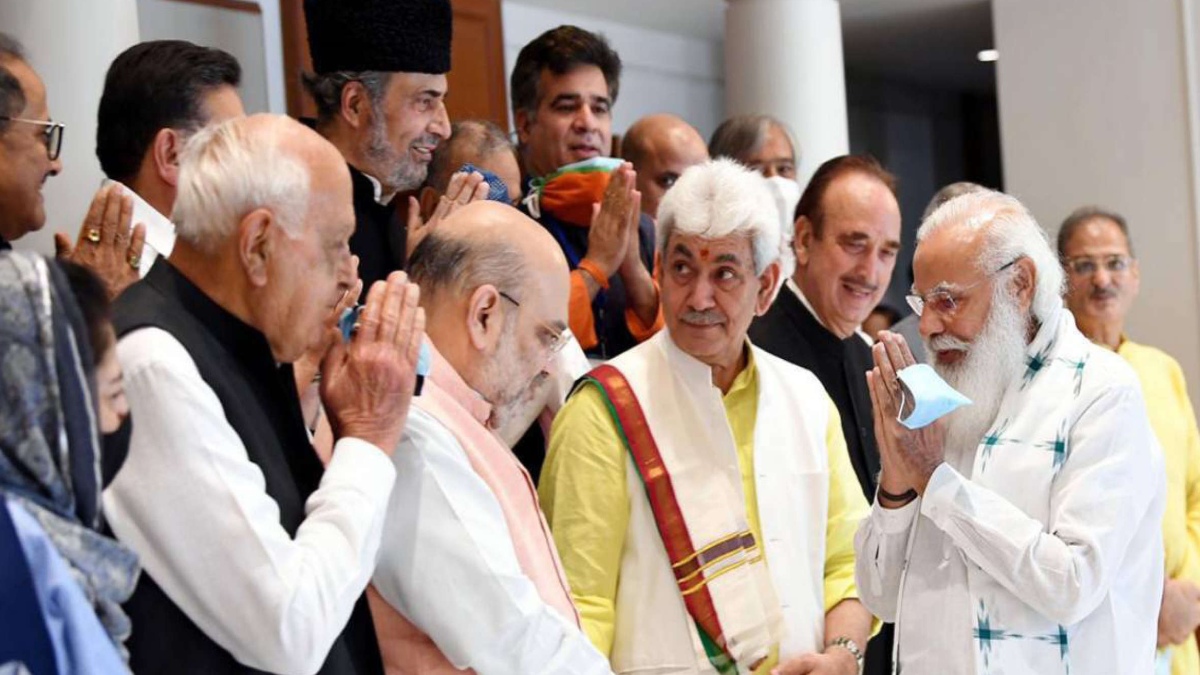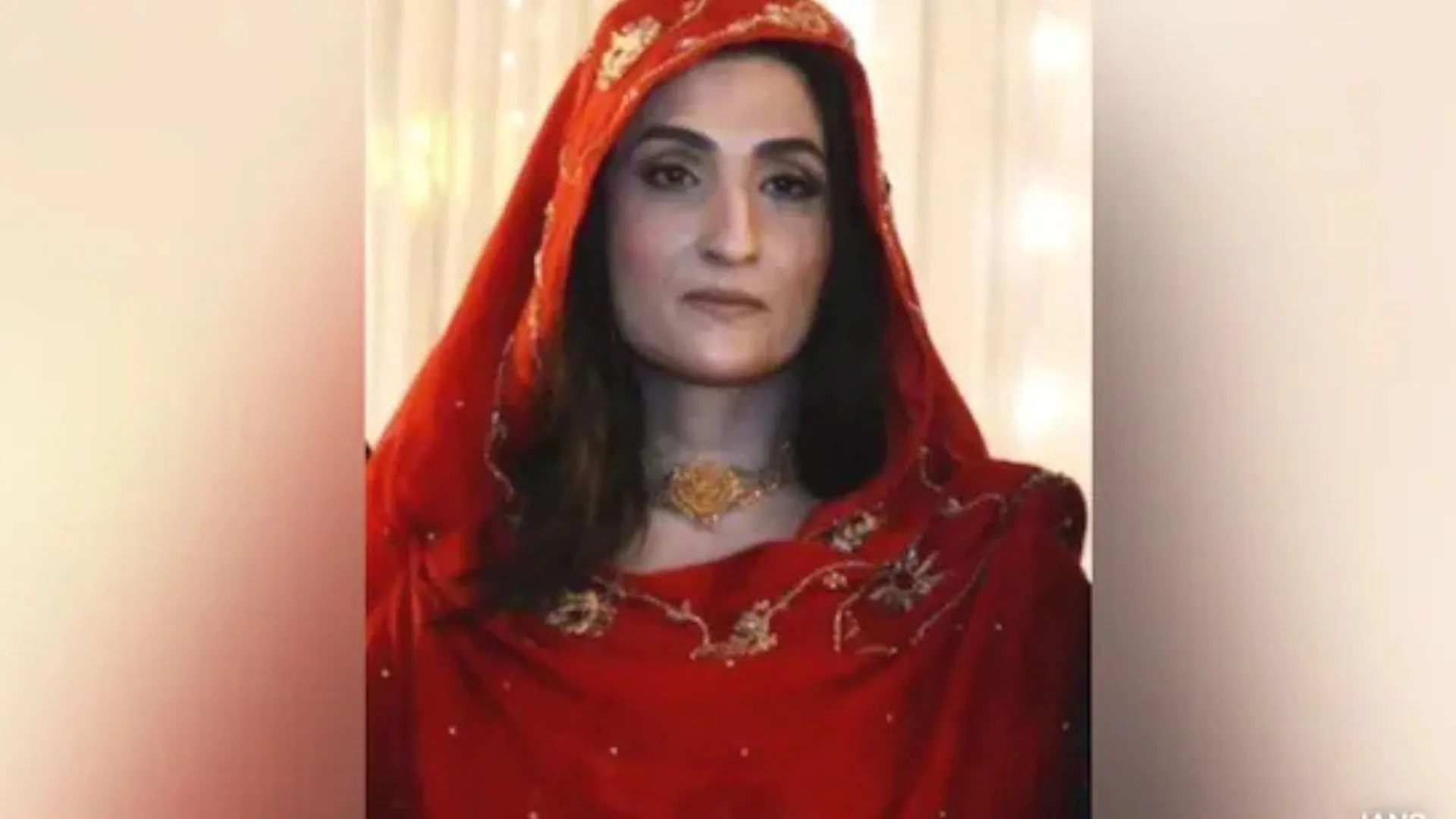The meeting on 24 June proved to be Prime Minister Narendra Modi’s masterstroke. None in the anti-Modi camp could imagine that those who opposed the Prime Minister tooth and nail would meet him with such a bonhomie. There was no firework and not even a jarring note. Almost all who attended described the open-ended meeting as positive and lauded the Prime Minister for his constructive role.
The optics were backed by easily identifiable outcomes since the meeting outlined the roadmap of the democratic process in Jammu and Kashmir—Delimitation, Elections, and Statehood— and got the cooperation of all those who could try to create roadblocks including the Abdullahs and the Muftis. Doubting Thomases were proved wrong. The narratives of the Union Territory appeared to have completely transformed from talking on terrorism and alienation to development and Statehood. Everyone welcomed the Prime Minister’s stress on reducing “Dilli ki doori and Dil ki doori” (Distance from Delhi and alienation of hearts).
But nothing in Indian politics happens in a huff. From a stand advocating nothing short of revocation of Article 370 as a condition to participation in the democratic process in DDC elections under the new regime and further agreement now for strengthening democracy at the grassroots is a reflection of the changing realities in the UT. The tenor of cooperation heard at the Prime Minister’s meeting with political leaders was an echo of the ground situation that seeks to redefine politics there.
The UT is witnessing a new political vibrancy. Panchayat elections for 35,096 pancha constituencies and 4490 panchayat halqas (sarpanch constituencies) had taken place in November 2018. The PDP and the NC had refused to participate but the enthusiasm was palpable among general voters. Since many seats were vacant due to political reasons and fears, elections to more than 12,000 vacant seats were conducted in March 2020. Similarly, elections to DDC (District Development Council) were also completed.
Who won and who lost was not important. What was remarkable was the participation of the young people in the democratic process with new enthusiasm. The National Conference (NC) and the People’s Democratic Party (PDP) which had earlier boycotted the Panchayat polls formed a Peoples’ Alliance for Gupkar Declaration (PAGD) after realizing that not participating would give an easy victory to the BJP or candidates supported by it or enable new players to raise their political aspirations. PDP chief Mehbooba Mufti had said that there would be none left to hold the national flag if Article 370 was abolished. Nothing like this happened. The participation of new players in the politics of Jammu and Kashmir sent alarm bells ringing to established parties. Participation was a better option for the PAGD than boycotting and getting consigned to permanent irrelevance.
The Modi Government at the Centre was not much concerned with who had won or lost at the local elections. It was determined to empower people to shape their own destiny. Way back in 2015, the Prime Minister had sanctioned a development package of Rs 80,000 crore for the State. This was an omnibus package to take of all aspects of the State. About Rs 40,000 crore was for developing road infrastructure and other funds were supposed to take care of setting up beer healthcare facilities, setting up power plants, developing tourism and opening of AIIMS, IITs, and IIMs, besides completing other projects that were pending since the last decade or so.
The Prime Minister while announcing the package had stressed that funds would “never be a constraint in building a modern, progressive and prosperous State”. He recalled the mantra given by former Prime Minister Atal Bihari Vajpayee of Kashmiriyat, Jamhooriyat aur Insaniyat, and said: “I will like to follow these three mantras which are the pillars of development of Kashmir.”
The PDP-BJP alliance was expected to work for this development agenda and to wean away youths from militancy. But the alliance was mired in controversy with the PDP insisting on talks with Pakistan, soft-peddling Hurriyat leaders, and review of Armed Forces Special Powers Act (AFSPA), etc. Crucial time was lost and the contradictions both in terms of ideology and approach led to the collapse of the experiment on 19 June 2018.
The BJP tried to push development with mighty efforts when the State came under the Governor’s rule. It got a boost further after Article 370 was abolished on 5 August 2019. When the momentous decision was taken, it was largely believed that this special provision was the root cause of corruption and militancy in the region. The new regime promised better administration, good governance, and economic development of the region.
A new urgency was seen in the Modi Government to deliver on the promise made. Officials of various Central Ministries were asked to visit the region and figure out what individual ministries could do for the State. In January 2020, various Central ministers visited the UT as a part of the Modi government’s outreach programme. The Prime Minister had asked them to spread the message of development and also increase awareness about the various developmental schemes of the Central Government. The result of the focused approach on empowering the State was visible.
The PM’s package had envisaged the implementation of 63 projects of 15 Central Ministries of which 54 were to be implemented in the Union Territory of Jammu and Kashmir at the cost of Rs 58, 627 crores. By the beginning of March this year, 20 projects were either completed or substantially completed and the rest are at various stages of being implemented.
Work has started on 6000 pending projects of which 800 have been completed. New Central Sector Scheme for industrial development has been approved with an outlay of Rs 28,400 crore and a land bank of 29,030 canals has been created for setting up Industrial Estates. There are various Rail and Road projects which are being constructed at fast speed. The world’s highest railway bridge over river Chenab in Jammu and Kashmir is under construction. This will connect the Valley with the rest of India by train. Already metro rail is on its way to Srinagar and Jammu.
In July 2020, Defence Minister Rajnath Singh inaugurated six bridges in border areas of Jammu and Kashmir. Work on Shahpur-Kandi, electricity, and irrigation project hanging for over five decades, has begun. The Government has inaugurated 15 power projects and laid the foundation stone for 20 more at the cost of Rs 10,000 crore (September 2019).
Reform in the land registration system has helped Jammu and Kashmir earn Rs 100 crore from stamp duty and registration fee. Municipal committees have been empowered to approve projects of up to Rs five crore. Close to Rs 12,000 crore has been given directly to panchayats to develop as per their needs.
The government introduced an array of insurance schemes including the Atal Pension Yojana. More than 85 people-oriented development schemes including Pradhan Mantri Jan Dhan Yojana have been introduced. Union Home Minister Amit Shah pointed out that around 90% saturation has been achieved in individual beneficiaries of Central Government schemes in the Union Territory of J&K.
People were fed Islam, separatism, jihad, and terrorism. The new regime showed them development and better life. New activities promised better job opportunities besides expansion of jobs in the Government. The UT has already identified over 10,000 vacancies in various departments.
The youth have realized that the Pakistan dream will not take them anywhere and that their destiny is permanently lined to India. Gradually the shadow of jihad is being replaced by the desire for a peaceful living. When the UT is abuzz with economic activities and prospects of a better future, everyone there wants to grab the opportunity to participate in it.
If the economic ministries of the Union government showed eagerness to launch developmental initiatives to change UT’s skyline, the Army was taking all measured to stamp out terrorism and wean away local youths from taking guns. The result was for all to see. In 2018, when Jammu and Kashmir was a full-fledged state along with Ladakh, it witnessed 614 terror incidents. This number came down to 244 in 2020, a drop of 60.26 per cent. In 2021 so far (June 2021) only 43 terror incidents have been reported.
The casualty of security personnel in 2020 was 62 compared to 91 in 2018. Only 14 have been martyred this year. Official data put the number of small pelting incidents to 1412 in 2017, 1458 in 2018, and 1999 in 2019, and 327 in 2020. Also, there has been a drastic reduction in the number of local youths joining militancy. The days of glorification of a militant like Burhan Wani are over.
All these indicated that life was returning to normalcy and a political process must start to strengthen democracy. Those who would ignore the change and get guided by the old narrative would stand to lose. People have developed ennui for militancy or terrorism. The vested interests have got fully exposed.
It is in this context that the meeting was convened. Good sense prevailed over the parties that had dominated the political spectrum. Not cooperating with the Centre in development and democratic roadmap of the UT would mean committing political hara-kiri. It is the situation and people that have forced cooperation.
One sure winner was the emphasis of all leaders at their meeting with the PM that they were as much Indians as anyone else and that their talk about Pakistan was merely to bring peace in the Valley and that it no way reflected their support for Pakistan. Nothing more was needed to bring smile and happiness on the face of the Prime Minister who has been working so hard for this day.
The writer is the convener of the Media Relations Department of the BJP and represents the party as a spokesperson on TV debates. He has authored the book ‘Narendra Modi: The Game Changer’. Views expressed are writer’s personal.













